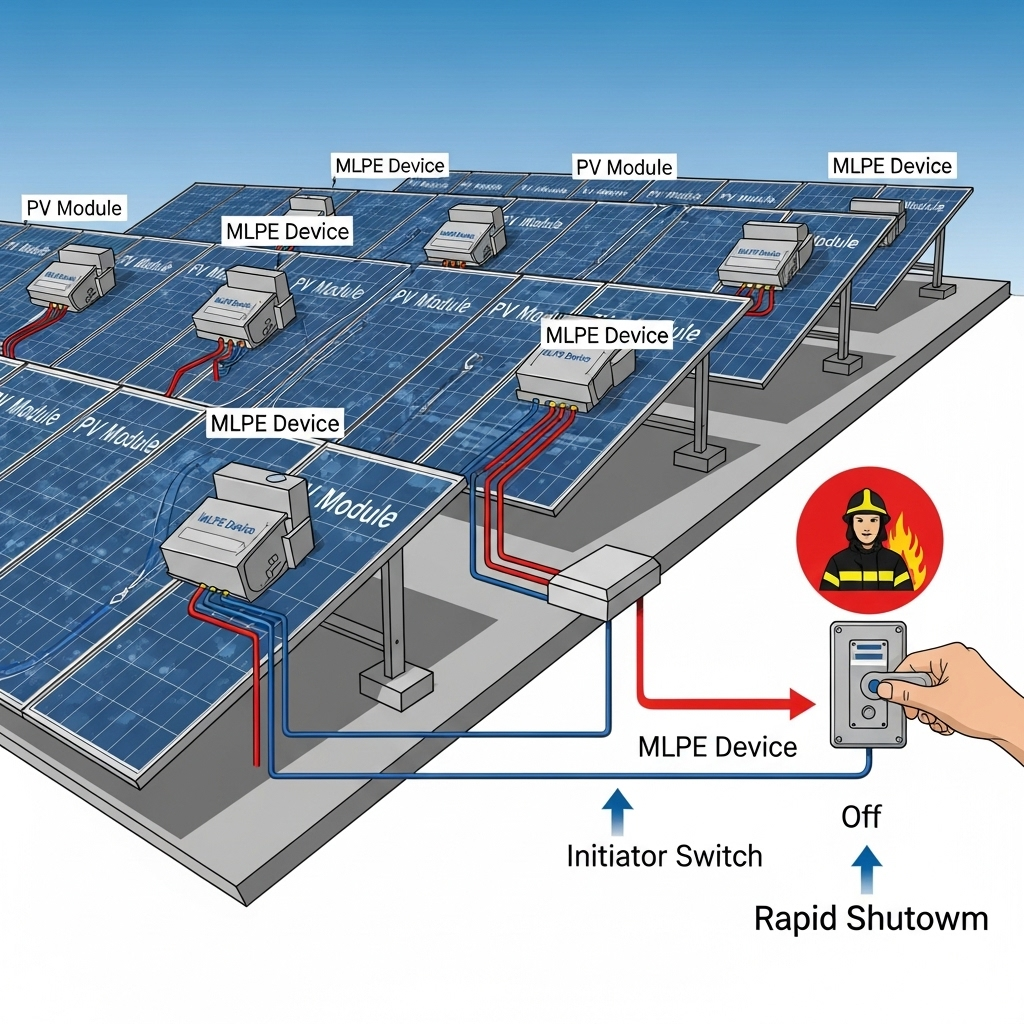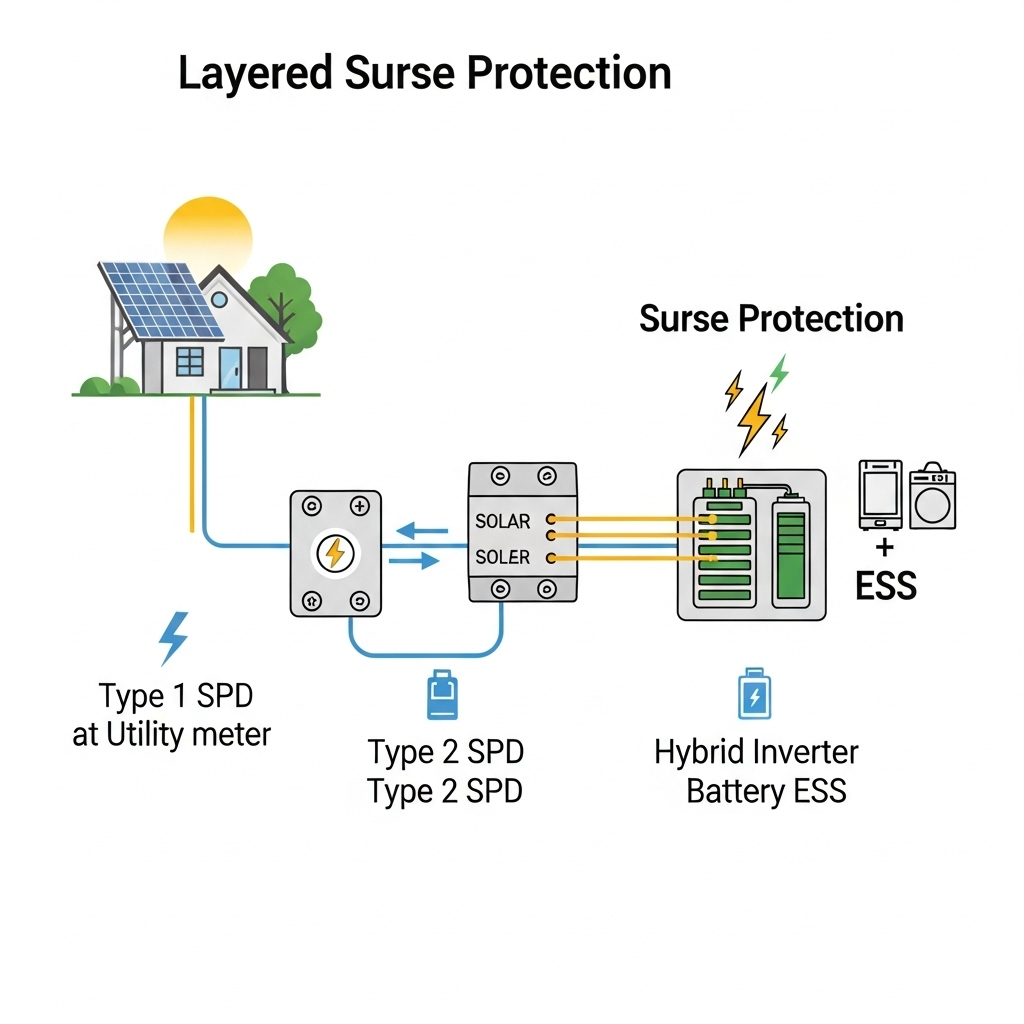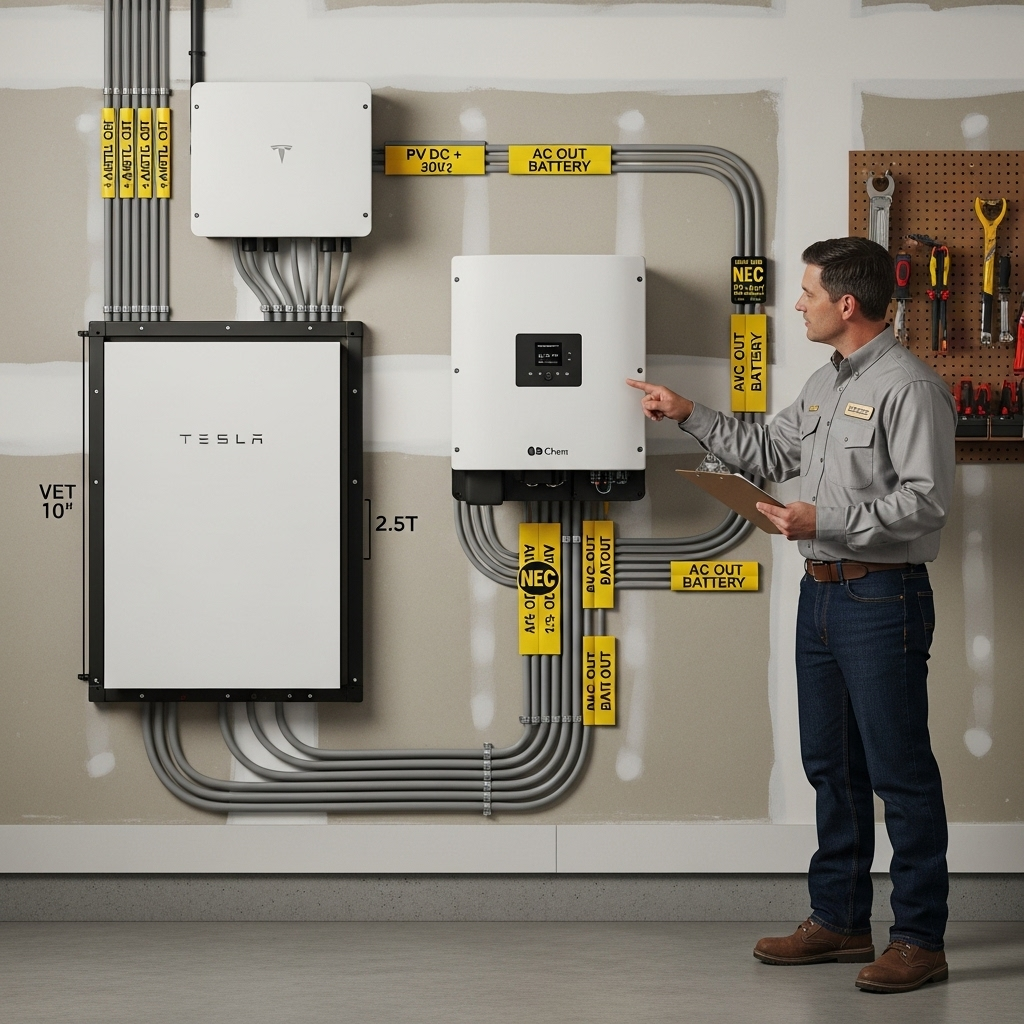Ensuring the safety of a solar installation is paramount, especially for first responders who may need to access a property during an emergency. The National Electrical Code (NEC) addresses this directly with Article 690.12, which outlines rapid shutdown requirements for photovoltaic (PV) systems. This regulation ensures that DC conductors can be quickly de-energized, minimizing electrical hazards. For system designers and installers, this leads to a critical choice between two primary rapid shutdown strategies: module-level and string-level shutdown. Understanding the differences is key to designing a safe, compliant, and cost-effective system.
Understanding the Core Requirement: NEC 690.12 Rapid Shutdown
The rules for rapid shutdown are designed with a clear purpose: protecting firefighters from the dangers of energized solar conductors on a roof. A PV array can remain live even when the main utility power is cut, creating a significant risk. Rapid shutdown provides a standardized method to control this hazard.
The 'Why' Behind Rapid Shutdown
The fundamental goal of NEC 690.12 is to establish a safe electrical environment for emergency personnel. By activating a single, easily accessible initiator, the system's voltage must be reduced to specified safe levels within seconds. This process of 'PV hazard control' is a non-negotiable aspect of modern solar installations on buildings.
Defining the Controlled Zone
The NEC defines a specific boundary for voltage control. This boundary is typically 1 foot (305 mm) in all directions from the PV array. The requirements are twofold:
- Outside the boundary: Conductors must be reduced to not more than 30 volts within 30 seconds of initiation.
- Inside the boundary: Conductors within the array itself must be reduced to not more than 80 volts within 30 seconds.
Meeting the 80-volt requirement inside the array is often the most challenging part of compliance and where module-level and string-level strategies diverge.
What Triggers a Rapid Shutdown?
A rapid shutdown system is activated by an initiator device. This is typically a dedicated switch with a clear 'off' position. It must be installed in a readily accessible location for firefighters. When the initiator is switched off, or when AC power is lost to the inverter, the rapid shutdown function must engage automatically.

Strategy 1: Module-Level Rapid Shutdown (MLPE)
Module-Level Power Electronics (MLPE) represent the most granular approach to rapid shutdown. This strategy involves placing a small electronic device on every single solar module in the array.
How It Works
With an MLPE strategy, each PV module is paired with a device like a microinverter or a power optimizer. These devices can control the output of their specific module. During a rapid shutdown event, each MLPE device de-energizes its panel, effectively isolating it from the rest of the system. Because each module typically operates well below 80 volts, this method inherently satisfies the strict voltage requirement inside the array boundary.
Advantages and Considerations
The primary advantage of module-level shutdown is its straightforward path to compliance and the highest degree of safety. Since each panel is individually controlled, there is no ambiguity about meeting the 80-volt limit. Additionally, many MLPE systems offer the benefit of per-module performance monitoring and power optimization, which helps identify issues and maximize energy harvest. The main consideration is the higher upfront equipment cost due to the number of components required.
Strategy 2: String-Level Rapid Shutdown
String-level rapid shutdown takes a different approach, aiming to control entire 'strings' of solar modules at once rather than each individual panel. This strategy uses fewer components on the roof.
How It Works
This method uses a rapid shutdown device that is typically installed at the edge of the array. When initiated, this device interrupts the circuit for one or more strings, stopping the flow of power from the array to the inverter. This effectively de-energizes the conductors running from the array to the inverter, easily meeting the 30-volt requirement *outside* the 1-foot boundary.
Meeting the 80V Requirement Inside the Boundary
Achieving compliance *inside* the array boundary with a string-level solution is more complex. A simple string disconnect switch does not limit the voltage within the string itself. Therefore, string-level shutdown systems must be specifically listed and certified as a complete system with the inverter and other components to meet the 80-volt requirement. These certified systems use various technologies to ensure the conductors within the array are rendered safe upon shutdown.
Advantages and Considerations
The main appeal of string-level shutdown is a potentially lower initial cost, as it requires fewer electronic devices on the roof. This can also mean fewer potential points of failure. However, the system design requires careful planning to ensure the chosen components are listed for use together and will meet all NEC 690.12 requirements. This strategy does not typically offer the granular performance data available with MLPE.
Comparative Analysis: Choosing the Right Strategy
Selecting between module-level and string-level shutdown depends on project goals, budget, and design priorities. Both are valid paths to NEC compliance when installed correctly.
Cost, Safety, and Performance
While MLPE systems may have a higher initial cost, the global trend shows a significant decrease in solar component prices. A report on Renewable Power Generation Costs in 2024 highlights that falling module and inverter costs have made advanced technologies more accessible. String-level solutions offer a lower upfront cost but may require more complex design work. In terms of performance, optimizing system output is a key factor. As detailed in the ultimate reference for solar and storage performance, granular monitoring available with MLPE can lead to better long-term energy production and simplified troubleshooting.
| Feature | Module-Level Shutdown | String-Level Shutdown |
|---|---|---|
| Compliance Method | Each module is individually controlled. | Controls the entire string of modules. |
| Safety Level | Highest; isolates each panel. | High; isolates strings, requires careful design for internal array wiring. |
| Cost | Higher initial equipment cost. | Lower initial equipment cost. |
| Complexity | Simpler compliance, more components. | Fewer components, potentially more complex design for compliance. |
| Performance | Often includes per-module optimization. | No inherent per-module optimization. |
| Troubleshooting | Easier due to panel-level data. | More challenging to isolate issues. |
A Final Word on Compliance
Ultimately, the choice between module-level and string-level rapid shutdown is less about which is 'better' and more about which is right for your specific project. The primary objective is always the safety of first responders. Both strategies can achieve full NEC 690 compliance when designed and installed with certified components by a qualified professional. Always consult with your local Authority Having Jurisdiction (AHJ) to confirm local requirements and interpretations.
Disclaimer: This article is for informational purposes only and does not constitute professional legal or financial advice. Always consult with a qualified professional for guidance on NEC compliance and system design.
Frequently Asked Questions
What is the main purpose of NEC 690.12 rapid shutdown?
Its primary purpose is to enhance firefighter safety by providing a method to quickly de-energize the DC conductors of a PV system on and in buildings. This reduces the risk of electric shock for first responders during an emergency.
Does a string inverter have built-in rapid shutdown?
Not typically by itself. While a string inverter is part of the system, it requires additional components, known as rapid shutdown devices (either module-level or string-level), installed near the array to comply with NEC 690.12. The inverter itself cannot de-energize the conductors between it and the array.
Is rapid shutdown required for ground-mounted solar arrays?
NEC 690.12 requirements apply to PV systems installed on or in buildings. Generally, ground-mounted arrays that are not on buildings and do not have conductors entering a building may be exempt, but this depends heavily on the interpretation by the local Authority Having Jurisdiction (AHJ). Always verify with local codes.
Can I mix module-level and string-level strategies?
Mixing strategies within the same system is not a standard practice and would likely create compliance complications. It is best to choose one consistent, certified strategy for the entire PV array to ensure predictable and safe operation.





Leave a comment
All comments are moderated before being published.
This site is protected by hCaptcha and the hCaptcha Privacy Policy and Terms of Service apply.